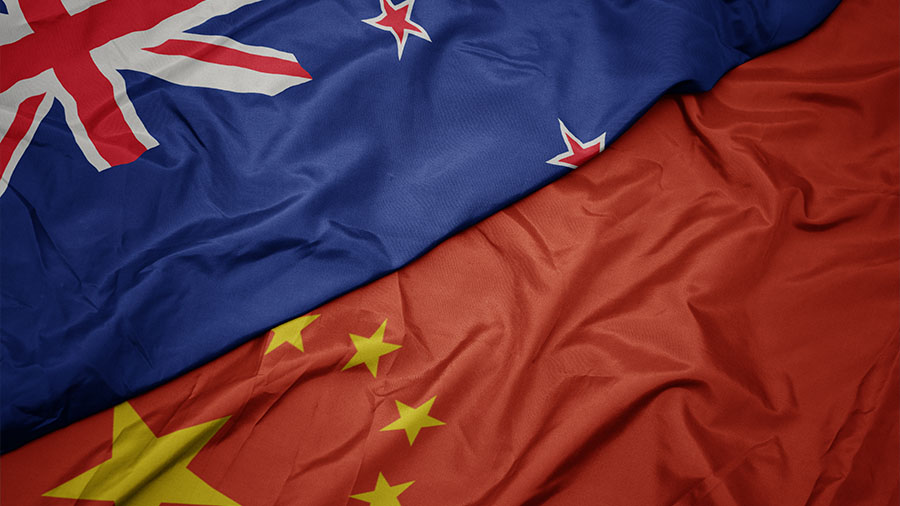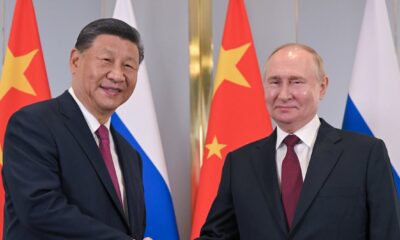China
China eliminates all safeguard tariffs on dairy products from New Zealand

As of January 1, 2024, New Zealand’s dairy products gained duty-free access to China, the result of tariff removal outlined in the China-New Zealand Free Trade Agreement. This benefits New Zealand businesses, investors, and solidifies China as its largest trading partner, with significant economic implications.
Starting January 1, 2024, New Zealand’s dairy products gained duty-free access to China, marking the culmination of strategic tariff removal outlined in the China-New Zealand Free Trade Agreement. This development provides new opportunities for New Zealand businesses and investors involved in the dairy sector, while also solidifying the role of China as New Zealand’s largest trading partner.
New Zealand announced that all its dairy products have gained duty-free access to the Chinese market as of January 1, 2024. This includes the removal of safeguard duties, especially those on milk powder, signifying the culmination of a deliberate step-by-step process in eliminating tariffs outlined in the China-New Zealand Free Trade Agreement (FTA). This decision represents not just the conclusion of a gradual tariff elimination journey but highlights the commitment of both countries to fostering open trade.
In this article, we delve into the historical context, assess the economic implications, and examine the specific impact of the recent tariff removal on New Zealand’s dairy industry and its trade relations with China.
This article is republished from China Briefing. Read the rest of the original article.
China Briefing is written and produced by Dezan Shira & Associates. The practice assists foreign investors into China and has done since 1992 through offices in Beijing, Tianjin, Dalian, Qingdao, Shanghai, Hangzhou, Ningbo, Suzhou, Guangzhou, Dongguan, Zhongshan, Shenzhen, and Hong Kong. Please contact the firm for assistance in China at china@dezshira.com.
China
Data Reveals the Chinese Government’s Popularity is Lower Than State Media Portrays
List experiments reveal that public support for the CCP and Xi Jinping is lower than official claims, highlighting preference falsification and evolving attitudes, especially during the White Paper protests against COVID-19 policies.
Insights from List Experiments
List experiments offer a nuanced approach to measuring public opinion in China, particularly regarding sensitive issues. Unlike traditional surveys that may prompt self-censorship, these experiments reveal that support for the Chinese Communist Party (CCP) and Xi Jinping may be overstated. Evidence suggests that preference falsification—concealing true opinions to align with perceived norms—is prevalent, indicating a disconnect between official figures and genuine sentiments among the populace.
The Impact of the White Paper Protests
Triggered by a tragic fire incident in November 2022, the White Paper protests marked a significant moment in China’s political landscape. Demonstrators expressed their discontent with the government’s stringent COVID-19 measures, challenging the notion that the CCP enjoys unquestioned popular support. Unlike many protests that tend to target local authorities, these protests specifically criticized the central government and the Party’s overarching rule.
Shifting Public Attitudes and Legitimacy
The legitimacy of the CCP relies heavily on public perception, historically linked to its economic achievements and social stability. However, events like the White Paper protests signal potential shifts in popular attitudes that may affect the regime’s stability and policy-making. With a slowing economy and increased authoritarianism under Xi Jinping, understanding these changing sentiments is critical for researchers and policymakers navigating China’s complex state-society dynamics.
Source : Data shows the Chinese government is less popular than state media makes it seem
Business
Faurecia Relocates Electronics Headquarters from Japan to China – Automotive News

Faurecia relocates its electronics business headquarters from Japan to China, signaling a strategic shift to enhance operational efficiency and strengthen its presence in the growing Chinese automotive market.
Faurecia’s Strategic Shift
Faurecia has announced the relocation of its electronics business headquarters from Japan to China. This move is aimed at enhancing the company’s presence in a rapidly growing market for automotive technologies. By shifting its base, Faurecia intends to optimize operations and better serve its clientele across Asia.
Strengthening Market Position
The decision is part of Faurecia’s strategy to consolidate its resources in regions where electric and hybrid vehicle demand is soaring. As China leads the global automotive market in innovative technologies, the relocation will allow Faurecia to align its efforts with industry trends and consumer needs.
Future Aspirations
With this strategic shift, Faurecia aims to drive innovation and expand its production capabilities in China. The company expects this decision to create new growth opportunities and help solidify its competitive edge in the evolving automotive landscape.
Source : Faurecia moves headquarters of electronics business from Japan to China – Automotive News
China
China’s FDI Trends for 2024: Major Sources, Destinations, and Industries

Despite a 13.7% decline in FDI inflows to $163 billion in 2023, China remains a strong magnet for foreign capital, holding a 12.3% global share. Early 2024 shows recovery, with increased foreign investment in high-tech and services sectors.
Despite a challenging environment, including a significant downturn in 2023, where FDI inflows fell by 13.7 percent to US$163 billion following a 4.5 percent growth in 2022, China remains resilient in attracting foreign capital. This decline was attributed to several factors, including an uneven post-COVID economic recovery, ongoing geopolitical tensions, regulatory uncertainties, and stringent capital control measures.
According to the recently released Statistical Bulletin of FDI in China 2024, China’s FDI scale remained stable in 2023, with a 12.3 percent share of global cross-border direct investment, marking the fourth consecutive year exceeding 10 percent.
Encouragingly, the first nine months of 2024 have demonstrated signs of recovery, with China attracting RMB 640.6 billion (US$90.26 billion) in foreign investment. Notably, there has been an 11.4 percent increase in new foreign-invested enterprises (FIEs), with high-tech manufacturing, medical equipment, and professional technical services experiencing substantial growth in foreign capital utilization.
These trends signal a shift towards innovation and services, underscoring ongoing investor interest in China’s dynamic market.
In this article, we explore the key trends and government initiatives shaping China’s FDI landscape, providing insights for businesses seeking to navigate and capitalize on opportunities in the world’s second-largest economy.
In 2023, China’s FDI landscape demonstrated a strong concentration across various industries, underscoring the country’s continued appeal to international investors. The primary sectors attracting foreign capital included:
| This article was first published by China Briefing , which is produced by Dezan Shira & Associates. The firm assists foreign investors throughout Asia from offices across the world, including in in China, Hong Kong, Vietnam, Singapore, and India . Readers may write to info@dezshira.com for more support. |
Read the rest of the original article.










